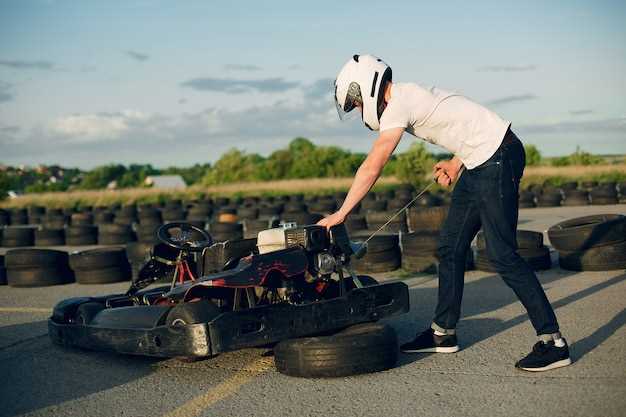
Spa-Francorchamps is not just a racetrack; it is a legendary venue that has witnessed the triumphs and tragedies of motorsport history. Known for its distinctive layout and challenging elevation changes, the track demands precision, skill, and an intimate understanding of the circuit. As drivers prepare to tackle this iconic course, several key insights can significantly enhance their performance and overall experience.
One of the most critical aspects of racing at Spa is mastering its undulating terrain. The combination of high-speed straights and technical corners requires a balance between aggression and control. Understanding the nuances of each section of the track can make all the difference in lap times. For instance, the famous Eau Rouge corner demands not only courage but also finesse, as drivers navigate the steep climb while maintaining optimal speed.
Weather conditions at Spa are notoriously variable, often changing from sunny to rain-soaked in just a matter of moments. This fluctuation presents a significant challenge, as drivers must be prepared to adapt their strategies mid-race. Keeping an eye on weather updates and understanding how the track compensates for moisture can help teams tailor their approach, whether that means opting for wet tires or making crucial pit stops at the right moments.
Finally, a thorough analysis of past races at Spa-Francorchamps reveals patterns that can provide valuable insights. Studying data on tire performance, pit strategies, and overtaking opportunities allows teams to formulate a comprehensive race plan. In a race as historic and unpredictable as this one, preparation is vital for achieving success on the revered Spa track.
Mastering the Eau Rouge and Raidillon: Techniques for Optimal Speed
Eau Rouge and Raidillon represent one of the most iconic and challenging sections of the Spa-Francorchamps track. Successfully navigating this uphill combination requires precision, timing, and a deep understanding of your car’s dynamics.
Approaching Eau Rouge, it’s vital to set your entry line correctly. Start by positioning your vehicle on the left side of the track, allowing for a smooth trajectory. As you near the apex, gradually apply the throttle while maintaining your line. The key is to balance speed and grip; too much throttle can lead to oversteer, while too little can compromise your exit speed.
As you transition through Eau Rouge, focus on your steering inputs. Aim for a fluid motion; the steering should be smooth and progressive to maintain optimal tire contact. This will help you generate the necessary downforce to tackle the rapid ascent of Raidillon. Remember that the elevation change can unsettle your car, so be prepared to adjust your steering and throttle inputs dynamically.
Once you reach the top of Raidillon, it’s crucial to carry as much speed as possible onto the Kemmel Straight. Anticipate the crest, and as your car levels off, shift your weight slightly forward to enhance front-end grip. This will allow for a more aggressive acceleration out of the corner.
Practicing these techniques consistently will build your confidence and improve your overall lap time. Use telemetry data to analyze your speed and throttle application at Eau Rouge and Raidillon; even small adjustments can lead to significant gains on this challenging part of the Spa track.
Tire Strategy for the Varied Conditions of Spa: What You Need to Know

Spa-Francorchamps is renowned for its unpredictable weather and diverse track conditions. To optimize performance, understanding the tire strategy is crucial for drivers and teams alike. This guide outlines essential considerations for tire selection and management at Spa.
The circuit features a mix of high-speed straights and technical corners, making tire choice critical. The varying elevation changes and the possibility of rain often lead to flucuations in grip levels. Therefore, teams should be prepared to adapt their tire strategy according to weather forecasts and track conditions.
Soft tires may provide the best grip in dry conditions, particularly in the first sector, where acceleration out of tight corners is vital. However, their durability can be compromised over a longer stint, especially in the latter stages of the race, when tire degradation becomes a factor. Medium tires can offer a balance between performance and longevity, making them a strong option for endurance.
When rain is a possibility, teams must have wet tires on standby. Intermediate tires are valuable when the track is damp but not saturated, allowing for quick laps without the risk of aquaplaning. Drivers need to be vigilant and ready to switch tires as the conditions change throughout the race.
Monitoring tire temperatures is another essential part of strategy at Spa. Teams must ensure that tires are operating within optimal temperature ranges to maximize grip and performance. This can be particularly challenging during the initial laps after a tire change, so communication between drivers and engineers is key.
Finally, pit stop timing can greatly influence race outcomes. A well-timed tire change can provide a significant advantage, particularly if the weather shifts unexpectedly. Understanding tire wear patterns and staying in tune with the evolving conditions will help teams make informed decisions at critical moments.
In summary, thorough preparation and flexibility are essential for tire strategy at Spa-Francorchamps. By staying aware of track conditions and adjusting their approach as needed, teams can enhance their chances of success in this challenging environment.
Understanding Weather Patterns and Their Impact on Race Performance

Spa-Francorchamps is renowned for its unpredictable weather, which significantly affects race dynamics. Rain can descend swiftly, transforming the track and challenging drivers to adapt quickly. Understanding these weather patterns is essential for teams and competitors aiming to optimize their performance.
The geographical location of Spa contributes to its variable climate. Nestled in the Ardennes region, it experiences microclimates that can lead to localized rain showers while neighboring areas remain dry. This phenomenon requires teams to stay alert to changes in weather forecasts and radar data to make timely decisions about tire strategies and pit stops.
Rain-affected races at Spa can lead to increased risk and reward. Drivers frequently face slick conditions, resulting in reduced grip levels on the track. Mastery of wet weather driving techniques becomes crucial, as even minor mistakes can lead to spins or crashes. Teams must also consider how rain can influence tire wear and temperature, further complicating race strategies.
In contrast, sunny conditions allow for higher speeds and more predictable race outcomes. However, teams must be prepared for the possibility of sudden weather changes. The notorious “Spa rain” requires drivers to be proactive, evaluating track temperatures and cloud cover throughout the race.
Ultimately, successful navigation of Spa’s climate challenges hinges on preparation and adaptability. Teams should continuously monitor weather patterns and leverage data analytics to inform real-time decisions during the race. A keen understanding of how weather affects the track can be the deciding factor between victory and defeat at this iconic circuit.



